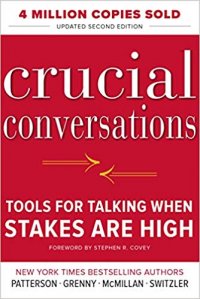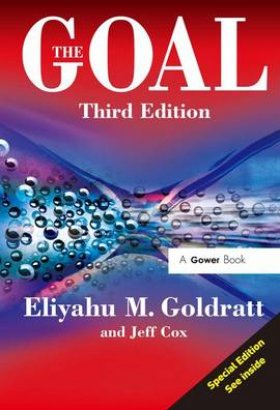You may also like

Crucial Conversations
by Patterson, Grenny, McMillan, and Switzler
Creativity, Inc.
by Ed Catmull & Amy Wallace






by Eliyahu Goldratt and Jeff Cox
“The Goal,” is a staple of many BBA and MBA programs. It introduces the Theory of Constraints (ToC), which started out as a series of manufacturing and logistic concepts but has since been applied to almost every industry and profession (Retail Sales, Project Management, general problem solving, etc.). While the book’s cheese factor is on point, the concepts can be very powerful and thought provoking.
The book starts out by introducing the protagonist, Alex Rogo, a plant manager for Unico, a large manufacturer. The company as a whole is in deep trouble, specifically his plant. He MUST find a way to improve the performance of his plant or the board has threatened to close it down.
While almost every team in the plant is meeting their own efficiency goals and metrics, the plant has almost too many problems to count. They have waaay too much inventory of some units and not enough inventory of others. They can’t seem to ship any order on time, which leads to angry customers, which leads to urgent order fulfillment, which leads to manually manipulating the manufacturing process, which leads to etc. etc. etc.
The first objective of the book is to guide Alex to the simple fact that the goal of a company, at its root, is to make money (though how much money is more subjective). Every act the company makes should be to support that goal. Without being able to accomplish this, nothing else matters because the company will cease to exist. We have to maintain this high-level view of our goal because without it we will put misguided effort into improving other KPIs and metrics, which will have an adverse impact. Profitability is the ultimate metric.
Once Alex comes to this revelation, he’s introduced to the steps Theory of Constraints:
A couple of other key takeaways I had when reading The Goal:
If you’ve never read The Goal by Eli Goldratt, you’re missing out. It was an eye-opening experience for me because I couldn’t help but see how the same concepts could be applied to my day to day work. I challenge each of you to think about how these concepts can apply to your system, team, or project.


